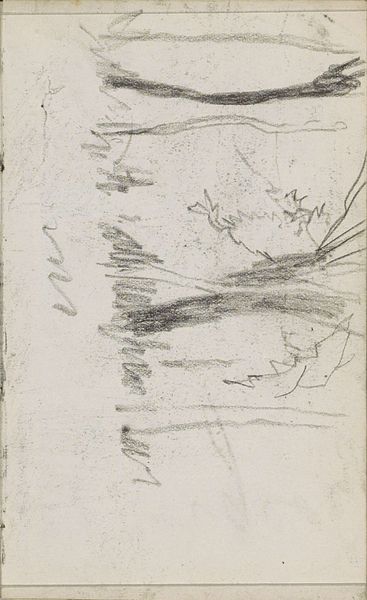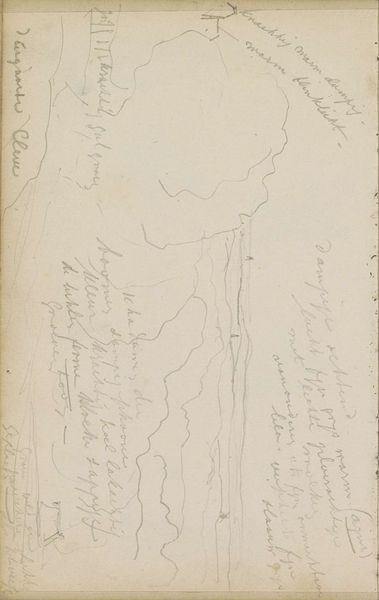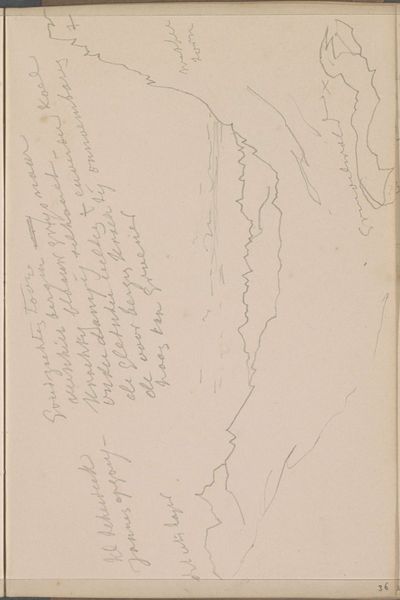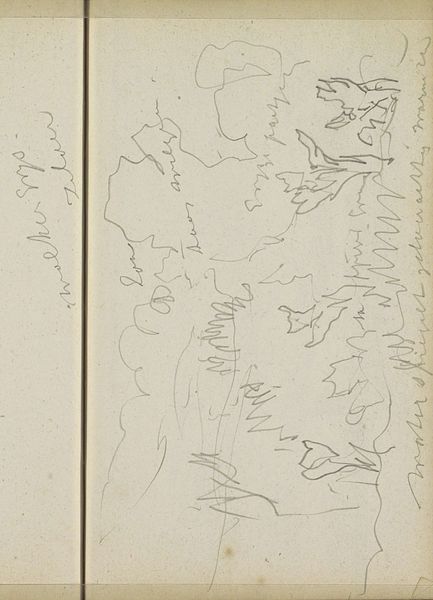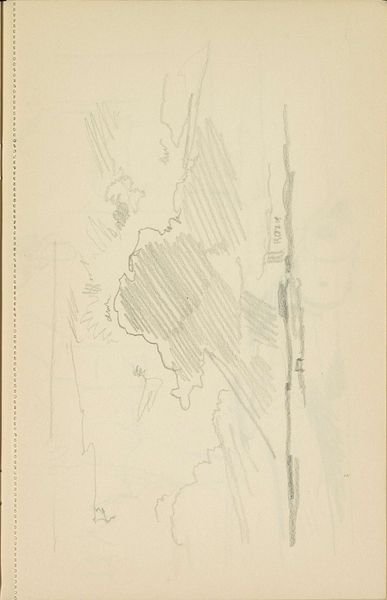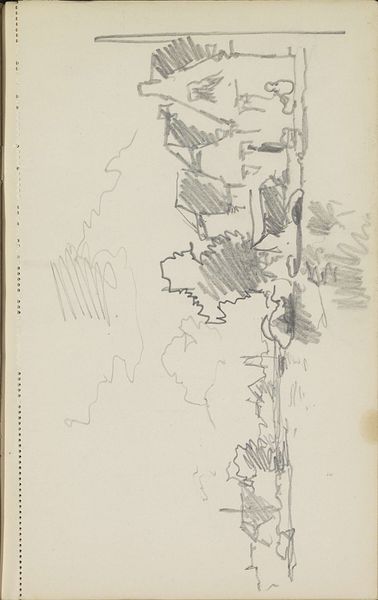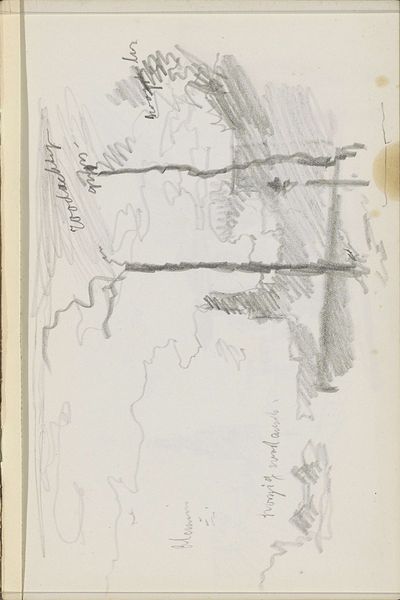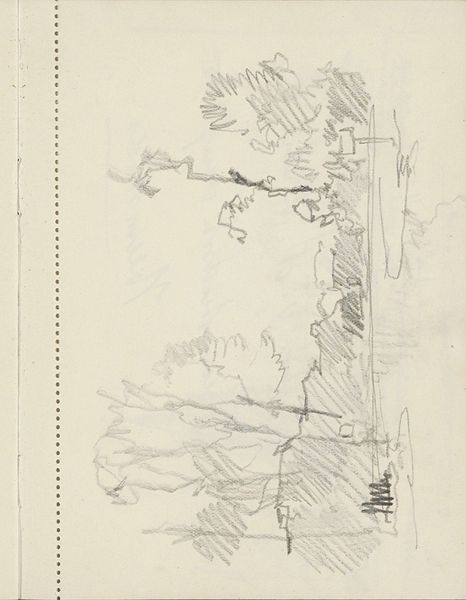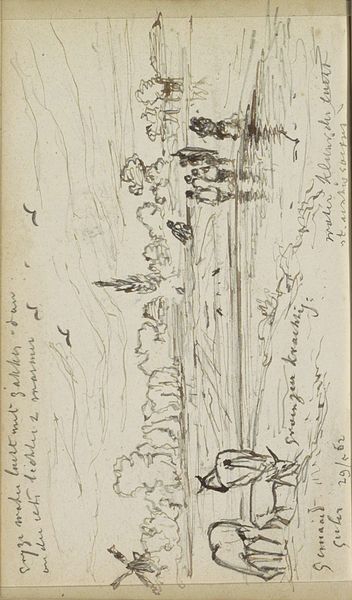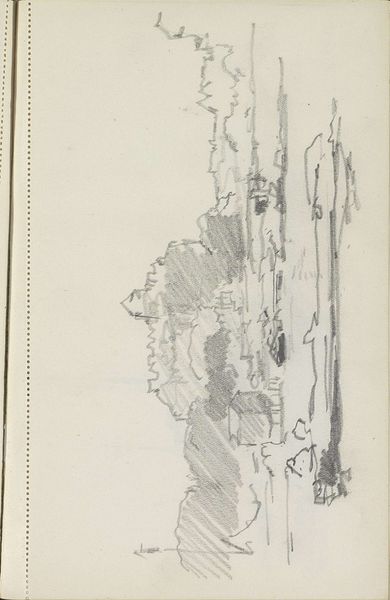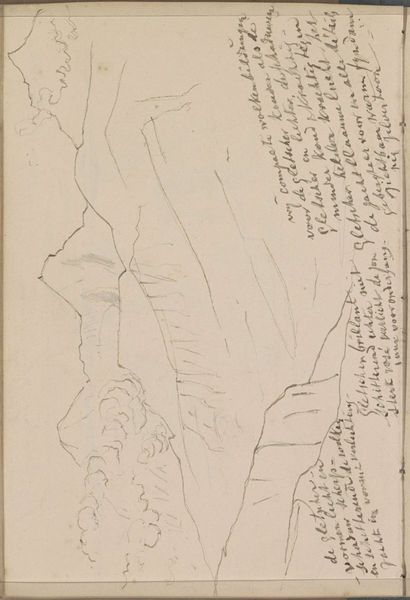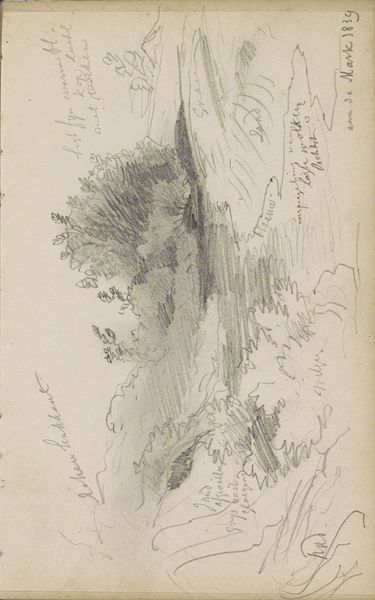
drawing, paper, graphite
#
drawing
#
landscape
#
paper
#
graphite
#
realism
Copyright: Rijks Museum: Open Domain
Editor: We're looking at "Boom," a drawing by Johannes Tavenraat, dating from 1872 to 1878. It's graphite on paper. I find it really intriguing how a simple graphite drawing can evoke such a powerful sense of groundedness. What's your perspective on this piece? Curator: What strikes me most is its apparent simplicity juxtaposed with its latent complexity. This wasn't merely a landscape study; Tavenraat, consciously or not, engages with broader questions of land ownership, environmental exploitation, and our relationship with the natural world. Consider the context: the late 19th century saw increased industrialization. Could this drawing be read as a subtle act of resistance, an attempt to capture something pure before it disappears, forever altered by human intervention? How does this change your perspective, thinking of land and memory as deeply intertwined? Editor: That’s interesting. I was focusing on the technique and the detail in the trunk but framing it as a statement on land and industry adds another layer. Curator: The very act of meticulously rendering the tree’s strength using graphite—a medium easily erased—speaks volumes about our fleeting control over nature. Are we capable of creating a sustainable legacy, or will our impact only result in eventual obliteration? Think of the Indigenous claims to land being overpowered by capitalist expansion; does this image give rise to similar narratives about taking up space? Editor: It does feel more urgent when I think of it that way. Seeing art as a way to unpack land politics makes me see landscape art from that time in a new light. Curator: Exactly! It pushes us beyond mere aesthetic appreciation and demands that we engage with difficult histories and ongoing struggles for environmental and social justice. Understanding art in its socio-historical context challenges preconceived notions of neutrality, hopefully instigating critical engagement. Editor: Thank you, I’ll be sure to consider the context from now on.
Comments
No comments
Be the first to comment and join the conversation on the ultimate creative platform.
